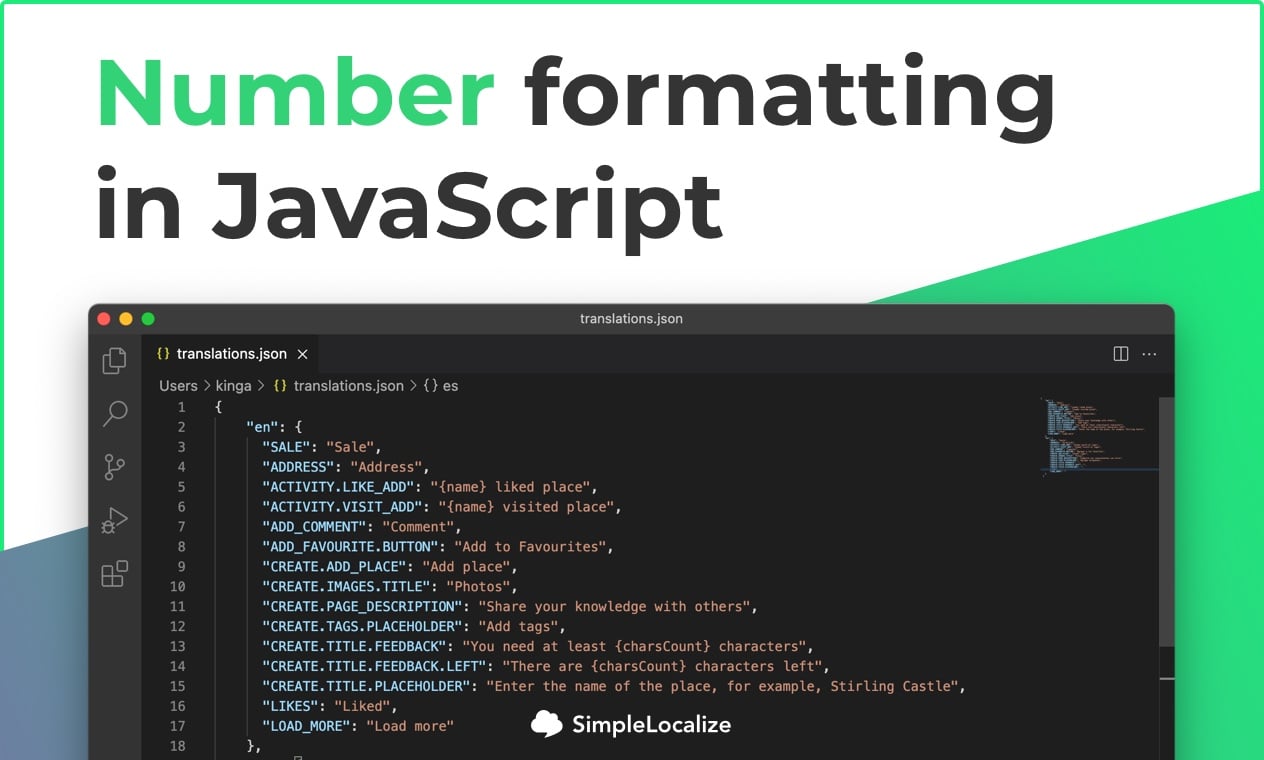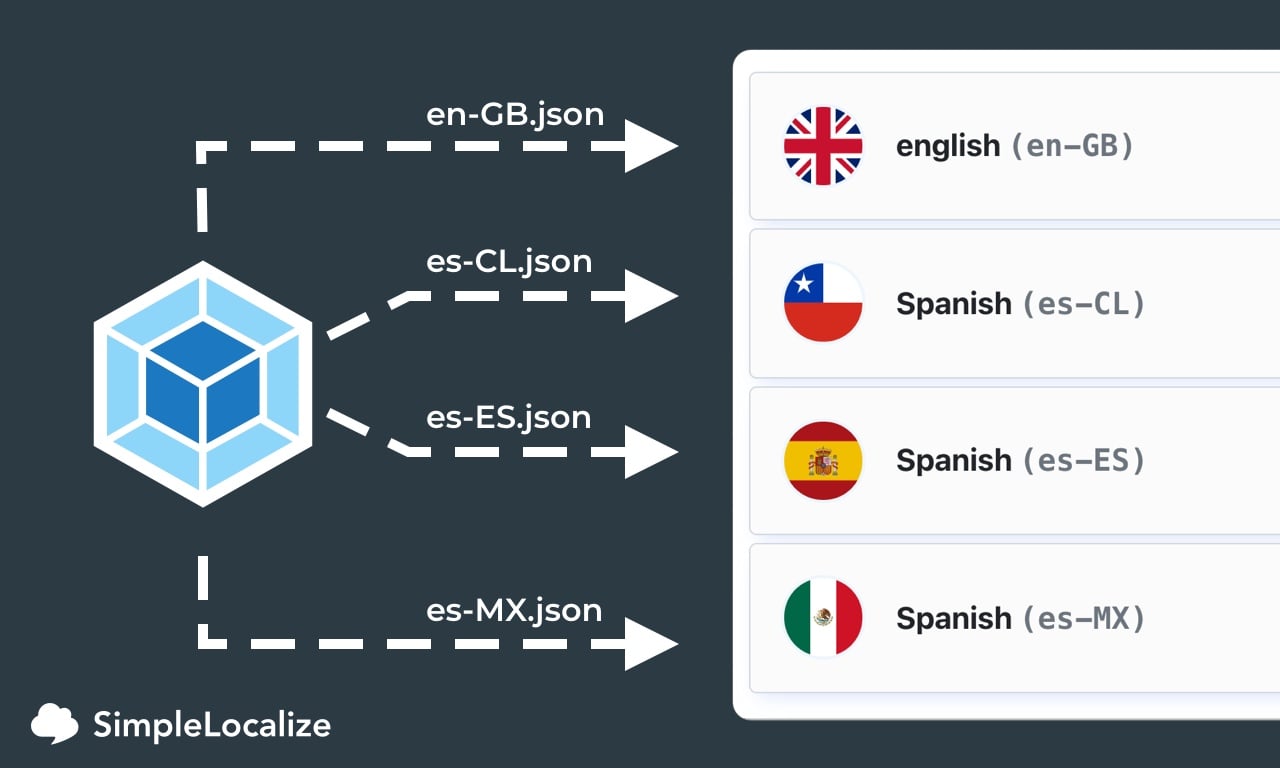Number formatting in JavaScript

Discover the power of toLocaleString() function in JavaScript. Format numbers, currencies, and units without any 3rd party localization library.
In simple words, the toLocaleString() method converts a number into a string, using locale format. By default, it uses locale from web browser language, but you can specify it manually.
Syntax
number.toLocaleString(locale, options);
Parameters
locale(optional) - if not provided, then the method will use the host environment's current locale (e.g., : default browser language)options(optional) - object with formatting options
var exampleNumber = 123456.789;
exampleNumber.toLocaleString('pl-PL');
// output: 123.456,789
number.toLocaleString('ar-EG');
// output: ١٢٣٤٥٦٫٧٨٩
Limit to two significant digits
const price = 123456.789;
price.toLocaleString('en-IN', {
maximumSignificantDigits: 2
});
// output: 1,23,000
Use default locale and custom number formatting
Put undefined as first parameter, to use default locale set in browser.
const price = 30000.65;
price.toLocaleString(undefined, {
minimumFractionDigits: 2,
maximumFractionDigits: 2
});
// English output: 30,000.65
// German output: 30.000,65
// French output: 30 000,65
Change formatting style
Style property can have 3 different values:
decimal(default)currencypercentunit
In this article, we go through every style.
Style: Currencies
Use style property in options object with value currency to format number into a string.
const price = 123456.789;
price.toLocaleString('de-DE', { style: 'currency', currency: 'EUR' });
// output: 123.456,79 €
price.toLocaleString('ja-JP', { style: 'currency', currency: 'JPY' });
// output: ¥123,457
You can adjust currencyDisplay property to change currency formatting. Possible values are:
symbol(default)codename
const price = 123456.789;
price.toLocaleString('de-DE', {
style: 'currency',
currencyDisplay: 'code',
currency: 'EUR'
});
// output: 123.456,79 EUR
price.toLocaleString('ja-JP', {
style: 'currency',
currencyDisplay: 'name',
currency: 'JPY'
});
// output: 123,457円
Style: Percentages
Percentage localization is a non-trivial task in some languages. Not in every language, percentage sign comes after a number. For example, in Arabic languages.
const value = 0.767;
value.toLocaleString('pl-PL', { style: 'percent' });
// output: 77%
value.toLocaleString('ar-SA', { style: 'percent' });
// output: ٧٣٪
Style: Units
Units style is one of the most understated JavaScript locale features. It allows you to format number into any popular units with proper formatting for given locale.
Example with liter unit
Use unit property in options object to set a desired unit.
const value = 3;
value.toLocaleString('pl-PL', {
style: 'unit',
unit: 'liter'
});
// output: 3 l
You might also want to adjust unitDisplay property to show full word instead just one letter.
const value = 3;
value.toLocaleString('pl-PL', {
style: 'unit',
unit: 'liter',
unitDisplay: 'long'
});
// output: 3 litry
The shortest version you will get with narrow value in unitDisplay.
const value = 3;
value.toLocaleString('pl-PL', {
style: 'unit',
unit: 'liter',
unitDisplay: 'narrow'
});
// output: 3l
List of JavaScript number locale units
Below, you can check all possible values for unit property.
unit value |
|---|
| acre |
| bit |
| byte |
| celsius |
| centimeter |
| day |
| degree |
| fahrenheit |
| fluid-ounce |
| foot |
| gallon |
| gigabit |
| gigabyte |
| gram |
| hectare |
| hour |
| inch |
| kilobit |
| kilobyte |
| kilogram |
| kilometer |
| liter |
unit value |
|---|
| megabit |
| megabyte |
| meter |
| mile |
| mile-scandinavian |
| milliliter |
| millimeter |
| millisecond |
| minute |
| month |
| ounce |
| percent |
| petabyte |
| pound |
| second |
| stone |
| terabit |
| terabyte |
| week |
| yard |
| year |
Kilometer per hour
You can combine two values using per keyword, like X-per-Y. For example, kilometer-per-hour.
JavaScript will choose the best-fit localized pattern to format this compound unit.
const speed = 50.2137;
speed.toLocaleString('pt-PT', {
style: 'unit',
unit: 'kilometer-per-hour'
});
// output: 50,214 km/h
Terabyte per gram
The unit property doesn't have to make sense, it accepts any combination. 😊
const value = 50.2137;
value.toLocaleString('pl-PL', {
style: 'unit',
unit: 'terabyte-per-gram',
unitDisplay: "long"
});
// output: 50,214 terabajta na gram



